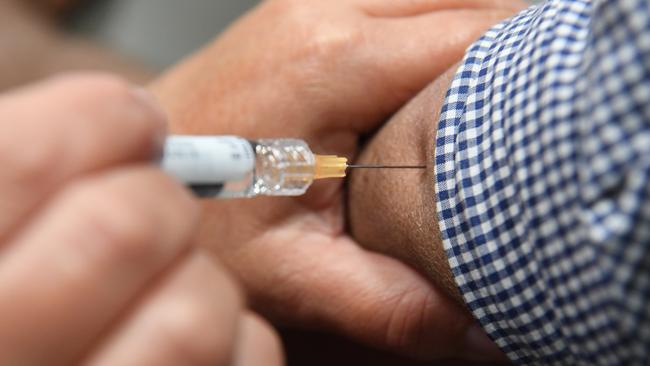Seventeen nursing home residents die with with flu-like symptoms
Seventeen Victorian aged care residents have died with influenza-like symptoms already this year, as the season tracks towards being one of the worst on record.
Seventeen Victorian aged care residents have died with influenza-like symptoms already this year, as the season tracks towards being one of the worst on record.
The flu season peak is still more than eight weeks off but already there have been up to 40,000 influenza notifications in Australia for 2019 — 8001 in Victoria — which researchers say is about three times the number recorded nationwide to this time last year.
MUM’S HORROR AS TRAIN TAKES OFF WITH BABY
THE CONFUSING ROAD RULE THAT COULD STING YOU
‘EGG GIRL’ CHARGED AS BYSTAND REVEALS SHOCK
This is being fuelled by an unusual occurrence where both influenza A strains are in high circulation. Usually only one dominates.
“Often it’s only one strain. H3 is the virus most commonly seen but this year both H1 and H3 are surging,” said professor Robert Booy, one of Australia’s top influenza experts, from the National Centre for Immunisation Research and Surveillance.
Influenza A/H1N1 is the most dominant strain in Victoria.
Almost 300 aged care residents have been hit so far this year — five times higher than this time last year — across 23 outbreaks and with 17 elderly people dying with flu-like symptoms.
There were no flu-related deaths in aged care residents in the first four months of the past two years.

There have been 1.27 million vaccine doses distributed across the state.
Vaccine production is in overdrive with a 300 per cent increase by one manufacturer.
Experts are also warning this year’s flu season could be on par or worse than the horror influenza outbreak in 2017, when a quarter of a million laboratory-confirmed cases were recorded.
“We don’t just think it’s because we’re identifying more either, we think it’s a real increase … that’s why we’re going really hard on vaccination,” senior medical virologist William Rawlinson said.

Professor Rawlinson said he expected up to 2 million people to be infected with the flu this year and that the virus would peak in July or August.
But only a quarter or less would be measured because most people were not tested.
“It’s likely this will be the highest number since 2017 although we’d be very concerned it may be higher because we haven’t seen so much in 2018,” Prof Rawlinson said.
Dr Booy said there had been a “sustained and rising” summer and autumn surge partly triggered by “reduced community immunity”.
It can also be revealed one of the major influenza vaccine suppliers, Seqirus, has increased doses manufactured for the current season by more than 300 per cent compared to the 2017 season.
Dr Booy said the number of doses bought by the government this year was “more than ever and they’ve been procured at a faster pace”.


